Name Vidyasagarji Maharaj Birth name Vidyadhar Initiated on 1968 | Parents Mallappa & Shrimati Role Jain monk | |
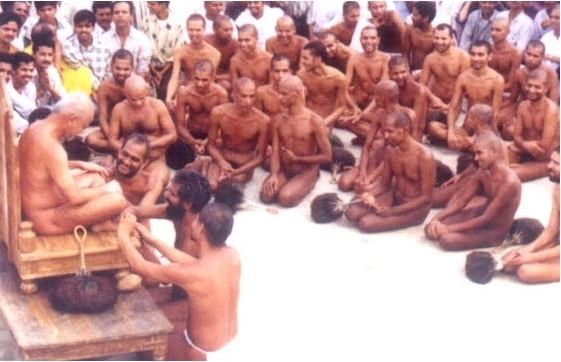 | ||
Name (official) Acharya Shri Vidyasagar Ji Maharaj Died 18 February 2024 (aged 77) Chandragiri, Rajnandgaon district, Chhattisgarh, India Resting place Chandragiri, Dongargarh, India Religion Jainism Sect Digambara Notable work(s) Mukamati (silent soil) Predecessor Muni Gyansagar Similar Pramansagar, Tarun Sagar, Gyansagar | ||
Acharya Shri Vidyasagarji Maharaj (10 October 1946 – 18 February 2024) was one of the best known modern Digambara Jain Acharya (philosopher monk). He was known both for his scholarship and tapasya. Despite of being in a modern age, he was known for his hard austerity and long hours in meditation.
Contents

Life
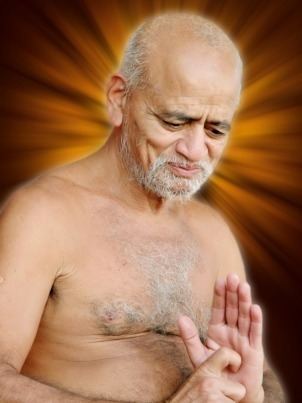
Vidyasagar was born as Vidyadhar on 10 October 1946 on Sharad Purnima (full moon) in Sadalga, Belgaum district, Karnataka. His father Mallappa, mother Shrimati, and two sisters took diksha and joined the sangh of Acharya Dharmasagar. Of the three brothers, two of them joined the sangh of Acharya Vidyasagar himself, leaving one brother Mahavira Ashtage, to marry and continue the blood line.

He was initiated as a Digambara monk at the age of 22 by Acharya Gyansagar, who belonged to the lineage of Acharya Shantisagar, at Ajmer in 1968. He was elevated to the Acharya status in 1972.
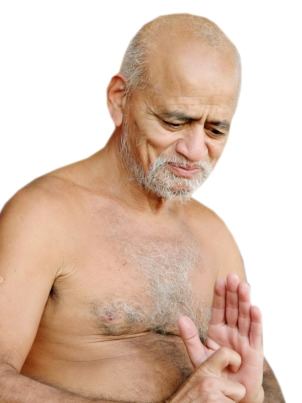
Acharya Vidyasagara was a scholar of Sanskrit and Prakrit and knows several languages such as Hindi and Kannada. Several researchers have studied his works for masters and doctoral degrees. His works include Niranjana Shataka, Bhavana Shataka, Parishah Jaya Shataka, Suniti Shataka and Shramana Shataka. He also authored nearly 700 Haiku poems which are unpublished. He authored the Hindi epic poem Mukamati. This has been also included in the syllabus of MA Hindi in various institutions. This epic poem has also been translated into English by Lal Chandra Jain and was presented to President of India.
Acharya Vidyasagar eas a source of inspiration to the people for starting institutions for the welfare of living beings at different places.
Acharya Vidyasagar was a source of inspiration for religious functions. He initiated more than 125 monks, a number unmatched in the past nine centuries.
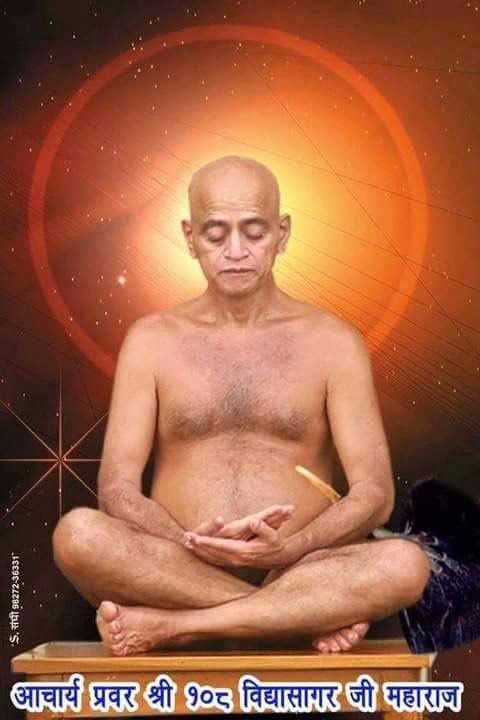
Acharya Vidyasagar was a source of inspiration for the construction, development and renovation of Jain temples and images all over India. He was always inspired to invite scholars of eminence to have discourses on different subjects. He took classes to teach his disciples different Jain texts. He was a strong supporter of cow protection movement.
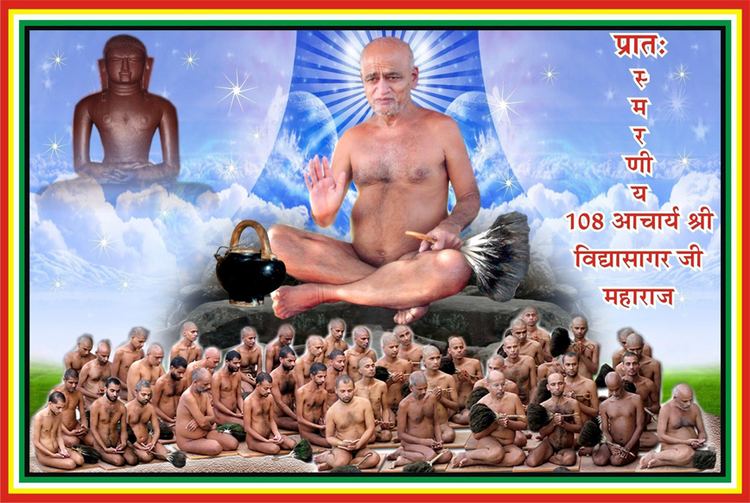
His Chaturmas for 2016 was in Bhopal, Madhya Pradesh, where he was accompanied by 38 munis. He gave his Pravachana in Madhya Pradesh Legislative Assembly on special invitation from Chief Minister Shivraj Singh Chouhan on 28 July 2016.
In 2016, during a busy trip to Bhopal, the Prime Minister Narendra Modi took time to visit him, leading to speculations on what was Modi's objectives and what they discussed. He was also visited by former Union minister Jyotiraditya Scindia from the opposing Congress Party There is a belief that his blessings may bring victory in elections.
His tradition
He belongs to the tradition established by Acharya Shantisagar. Acharya Shantisagar initiated Acharya Virasagar, who was then succeeded by Acharya Shivsagar, Acharya Gyansagar and finally Acharya Vidyasagara. Two of his brothers, Muni Yogasagar and Muni Samaysagar also followed him and were initiated as muni (monks) by Acharya Vidyasagar.
Some of his disciples are well known scholars of their own right. As of 2001, about 21% of all the Digambar monks were under Acharya Vidyasagara. One of his best known disciples, Muni Kshamasagar ji, obtained samadhi in 2015 Muni Sudhasagar and Upadhyaya Guptisagar are also his disciples.
Since the number of monks and nuns initiated by him and are directed by him exceeds two hundred (117 Digambar Muni, 172 Aryikas), they stay in more than 60 locations in India during chaturmas, ranging from Gujarat to Jharkhand, and Haryana to Karnataka. This ensures that only a few monks or nuns are staying in a place. They all depend on local Jains to provide them shelter and food.
His wanderings (Vihara)
As a traditional Digambara Jain monk, he never stays in a single place for more than a few days, except for the four months of the rainy season (chaturmas). He never declares which place he will be in next, although people attempt to estimate his next move. Since his initiation in 1968 he had 7 chaturmas in Rajasthan (1968–74), one in UP (1974), 7 in MP (1976-1982), one in Bihar (1983), 9 in MP again (1984-1992), two in Maharashtra (1993–94), one in MP (1995), one in Gujarat (1996), 11 in MP again (1997-2007), one in Maharashtra again (2008), 8 in MP again (2009-2016).
The Acharya does not eat salt, sugar, fruits, milk, in addition to what is traditionally prohibited (like onions). He goes out for meal at about 9 AM. The devout wait for him to pass by and urge him to visit their kitchen. The Acharya picks one family, and accepts food given to him in the palms of his hand, one morsel at a time.
Biography
His disciple Muni Kshamasagar wrote his biographical account which was titled 'In Quest of the Self' and was published by Bhartiya Jnanpith.
